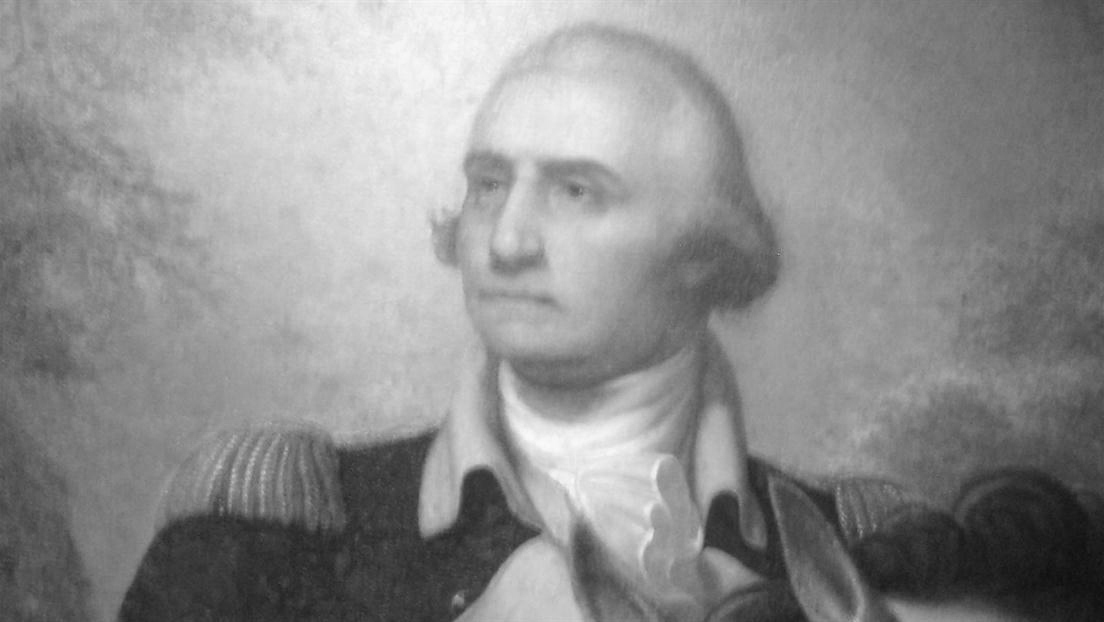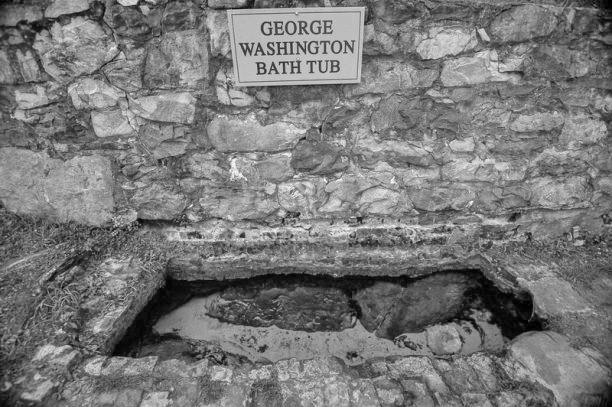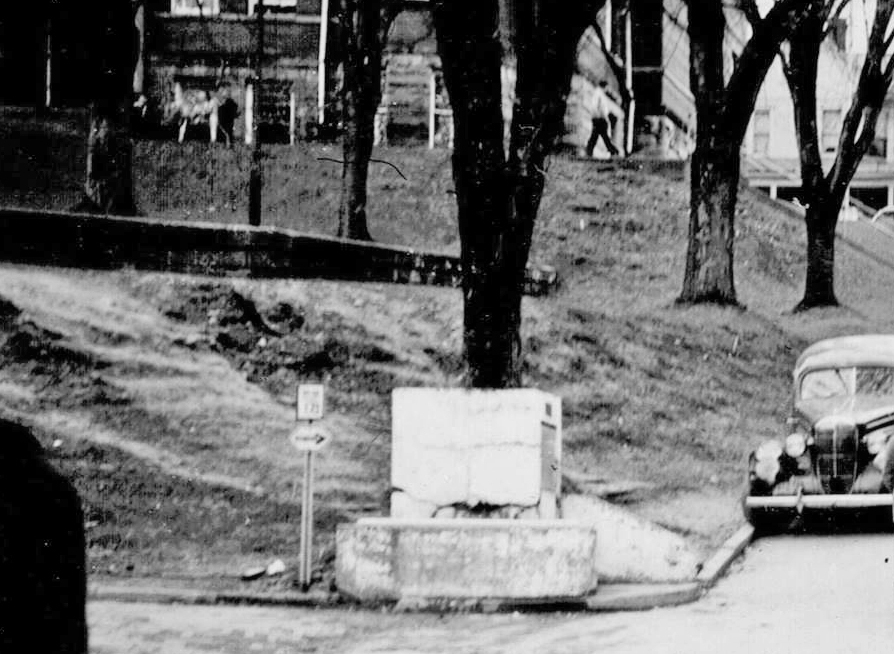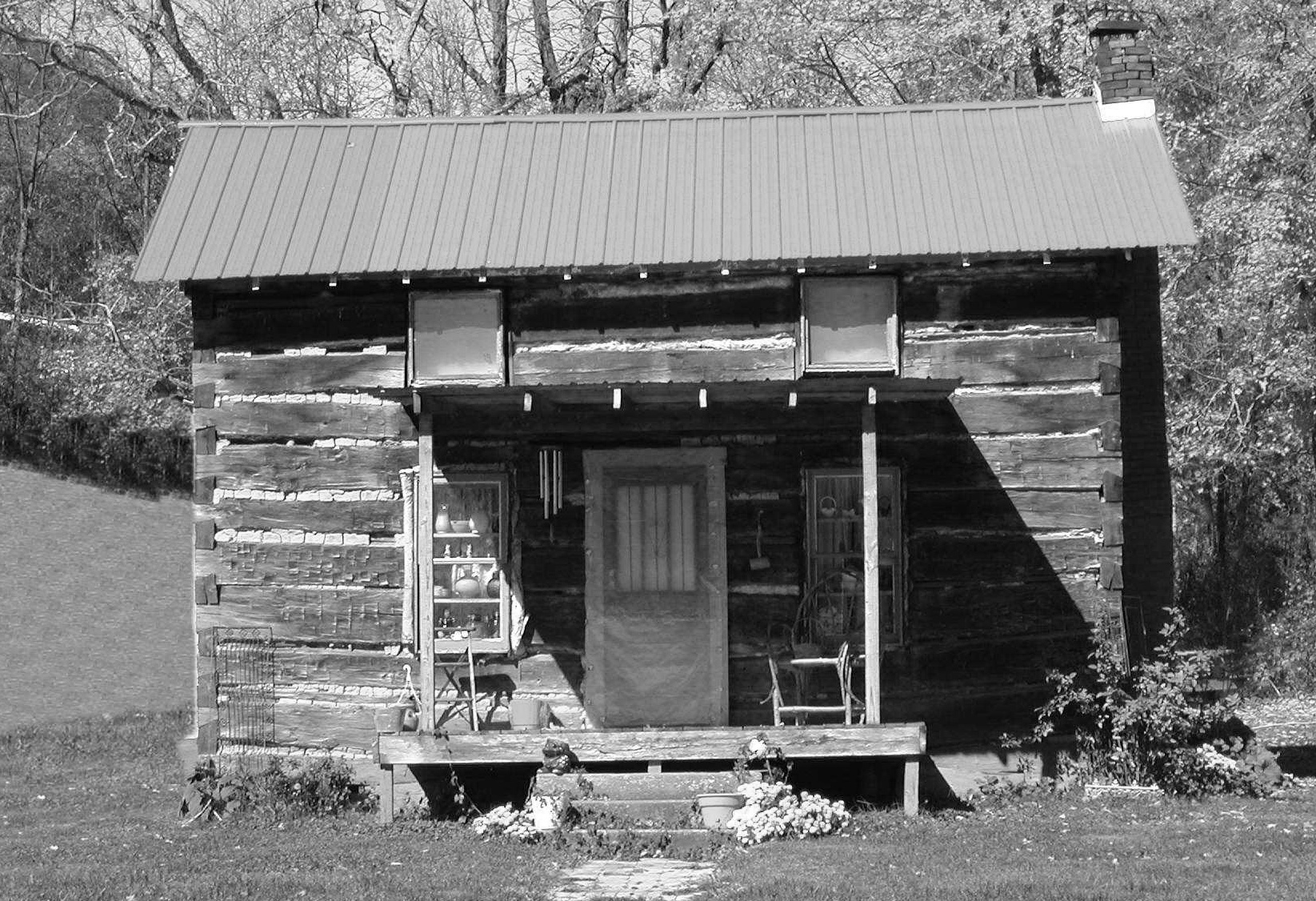
It’s almost true… well, kind of… his summer home was built there by James Rumsey. George Washington did purchase lots in the town of Bath in the “Northern Neck” of Virginia (later known as Warm Springs, Frederick Springs, and now Berkeley Springs, WV) and along the Potomac.
First, lets take a look at the earlier years of the “Father of our Country” and my own all-time favorite hero. President George Washington was born in Westmoreland County, VA on Feb. 22, 1732 to Augustine and Mary Ball Washington.
His father’s 1st wife, Jane Butler, died in 1729 leaving him with 2 sons, Lawrence (with whom George was so close to) and Augustine, Jr. and a daughter, Jane (George’s half-siblings). He then married Mary Ball (George’s mother). To this marriage was born six children, George (America’s 1st president), Elizabeth, Samuel, John, Charles, and Mildred (his full siblings).
At the age of eleven, George Washington’s father, Augustine, died leaving most of his vast property holdings to George’s 2 older half-brothers. What remained was just enough to maintain a living for his mother and siblings. As the oldest child, George was left to help his mother to manage the plantation. It was there that he learned the importance of hard work strategic management.
But enough about his youth, that’s another story which most of you know, and those of you who do not, it is worth discovering. Let’s get back to his connection to WV.
It was during a visit to now Berkeley Springs, WV in 1784 by George and Martha Washington that Washington began a long association with James Rumsey who was part-owner of the inn in which they stayed. James Rumsey demonstrated his newly invented pole boat for Washington and later enlisted his support for a steamboat. Washington was said to be there for the ship’s maiden voyage.
The following is Washington’s own words describing the stay: In his journal dated September 6, 1784, he writes, “Having obtained a Plan of this Town (Bath) and ascertained the situation of my Lots therein, which I examined, it appears that the disposition of a Dwelling House, Kitchen and Stable cannot be more advantageously placed than they are marked in the copy I have taken from the plan of the Town; to which I refer for recollection of my design; and Mr. Rumsey being willing to undertake these Buildings I have agreed with him to have them finished by the 10th of July.
Remaining in Bath all day was shown the Model of a Boat constructed by the ingenious Mr. Rumsey… to my very great satisfaction, exhibited to practice in private under the injunction of Secrecy, until he saw the effect of an application he was about to make to the Assembly of the State for a reward… what adds vastly the value of the discovery, is the simplicity of its works’ as they are made by a common boat builder or carpenter and kept in order as easy as a plow, or any common implement of husbandry on a farm.”
Washington had been to that area previously when he was but a youth on a surveying job. Of course, at that time, there was no town built yet. As Washington was known to keep detailed journals, he wrote on March 18, 1748, “called to see y Famed Warm Springs, we camped out in y field this night.”

During the 1760s, he visited the area several times with his 27-year-old wife, Martha Dandridge Custis (widow of wealthy plantation owner, Daniel Parke Custis, as well as with friends and colleagues. He also visited the healing waters of the springs when he was recuperating from an illness he contracted during his days in the military. The springs maintained a constant temperature of 74 degrees year-round and flowed from the ground at between 1,000 and 2,000 gallons per minute at that time. One could easily see why the former president found comfort in them.
George Washington wrote regarding his trips to the springs, “We found of both sexes about 250 people at this place, full of all manner of diseases and complaints; some of which are benefited, while others find no relief from the waters two of three doctors are here, but whether attending as physicians or to drink the water I know not. It is thought the springs will soon begin to lose their virtues, and the weather gets too cold for people not well provided to remain here. They are situated very badly on the east side of a steep mountain, and enclosed by hills on all sides, so that the afternoon’s sun is hid by 4 o’clock and the fog hangs over us till 9 or 10, like ghosts with occasional great damps and the mornings and the evenings to be cool.
However, I think my fevers are a good deal abated, though my pains grow rather worse, and my sleep equally disturbed; what effect the waters may have upon me I cannot say at present, as I expect nothing from the air this certainly must be unhealthy. I propose to stay here a fortnight and longer if benefited.”
It was not unusual for the president to take a horseback ride while he visited the springs. His favorite ride was said to be on a trail west of the town about 3 miles where he would come upon the scenic overlook at what is now known as Prospect Peak. The view is said to be virtually unchanged since Washington feasted his eyes upon it. He was so impressed with the area that he purchased riverfront acreage which he prized for its virgin walnut forests.
In October of 1770, George Washington and William Crawford (another famous frontiersman) left Mount Vernon traveling on the road marked out by Washington when he was with General Braddock in 1754. They then departed the Forks of the Ohio (present day Pittsburgh) and canoed down the Ohio River until they reached the mouth of the Great Kanawha River where it empties into the Ohio. He remarks in his journal about several peaceful encounters with Indians he met along the way.
They camped on the Virginia side on November 1 and proceeded up the Great Kanawha about ten miles. In his journal he writes, “Proceeded up the river with the canoe about 4 miles farther, and then encamped, and went a hunting; killed 5 buffaloes and wounded some others, and three deer. This country abounds in buffalo and wild game of all kinds, as also in all kinds of wild fowl, there being in the bottom a great many small grassy ponds, or lakes, which are full of swans, geese, and ducks of different kinds.”
After turning towards the Ohio River again, Washington describes huge sycamore trees. Then at the mouth of the Great Kanawha he marked several favorable tracts of land for the soldiers.
Many of these descriptions are thought to be descriptions of Chicamauga Creek (Gallipolis), Raccoon Creek (present Clay), Washington is impressed by much of the land along the river bottoms because of its potential for growing crops but dismisses much of the hilly landscape further away from the river, as being mostly suitable for grazing. Washington and his party did not venture south beyond Gallia County. He returned to Mount Vernon on December 1.
George Washington obtained a total of 30,000 acres of land in the region. Most of this was along the Ohio River between both Kanawha Rivers. However, he was never able to get the land settled. There was a stipulation that a certain number of settlers would have to inhabit the land within three years and because of renewed hostilities with the Indians this never happened.
Robert Safford was hired both as a hunter to provide meat for the colony and as a scout to look out for hostile Indians. It was only after General “Mad” Anthony Wayne routed a large Indian army in northwest Ohio in 1795 that the Ohio Valley was considered safe for settlement and at that time Washington was serving his second term as president.
In 1796, after two terms as president and declining to serve a third term, Washington finally retired. In Washington’s farewell address, he urged the new nation to maintain the highest standards domestically and to keep involvement with foreign powers to a minimum. The address is still read each February in the U.S. Senate to commemorate Washington’s birthday. At least, it used to be read then. I cannot say whether it is still the practice today.
Washington returned to his beloved Mount Vernon and devoted his attentions to making the plantation as productive as it had been before he became president. After 40+ years in public service to his country, the former president showed definite signs of age. Still, he was a larger-than-life figure and could dominant any room he chose to enter.
Sadly, the United States would feel the heart wrenching loss of their beloved, fearless leader (even in retirement) on December 14, 1799, he caught a cold after inspecting his properties in the rain. The cold developed into a throat infection and Washington died at the age of 67. (Some modern experts believe there were circumstances after he fell ill that caused his actual death.) He was entombed at Mount Vernon, which in 1960 was designated a national historic landmark.
At the time of his death, George Washington owned about 60,000 acres of land, the majority of which was in Jackson, Kanawha, Mason, Putnam, and Wood Counties in WV.
In earlier times throughout WV, signs proclaiming that “George Washington slept here” could be found at random, especially along the Northwestern Turnpike (old Rt. 50). However, there was little to no documentation to validate such claims.

We, here in Doddridge County, had a spring on Main Street in West Union which was located near the Veteran’s Memorial at the bottom of Spring Hill on the left as you go up the hill that tradition claims George Washington watered his horse and I’m sure drank from himself during his surveying duties. Although an attempt was made by the Historical Society to preserve the site without success, the spring is now buried beneath the hard surface, a result of the recent Streetscape Project.

There is also the log house in Greenwood formerly owned by Boyd and Martha Dotson that was said to have been a place in which young George Washington spent the night during his surveying duties. However, like most claims, there is no documentation to validate either Washington left his mark on nearly every aspect of all that was and is American. Known as “Father of His Country” his face appears on the U.S. dollar bill and quarter, and dozens of U.S. schools, towns, and counties, as well as the state of Washington and the nation’s capital city, are named for him.
There are those who would have him dishonored for a multitude of reasons. I refuse to go political in my articles. I’ll simply say that this great honorable man will remain one of the most powerful examples of what it takes to be a true leader. May God bless his memory and keep it free from tarnish.
Washington once said, “If freedom of speech is taken away, then dumb and silent we may be led, like sheep to the slaughter.”
Until next time, God bless & always remain humble.
Patricia Richards Harris

